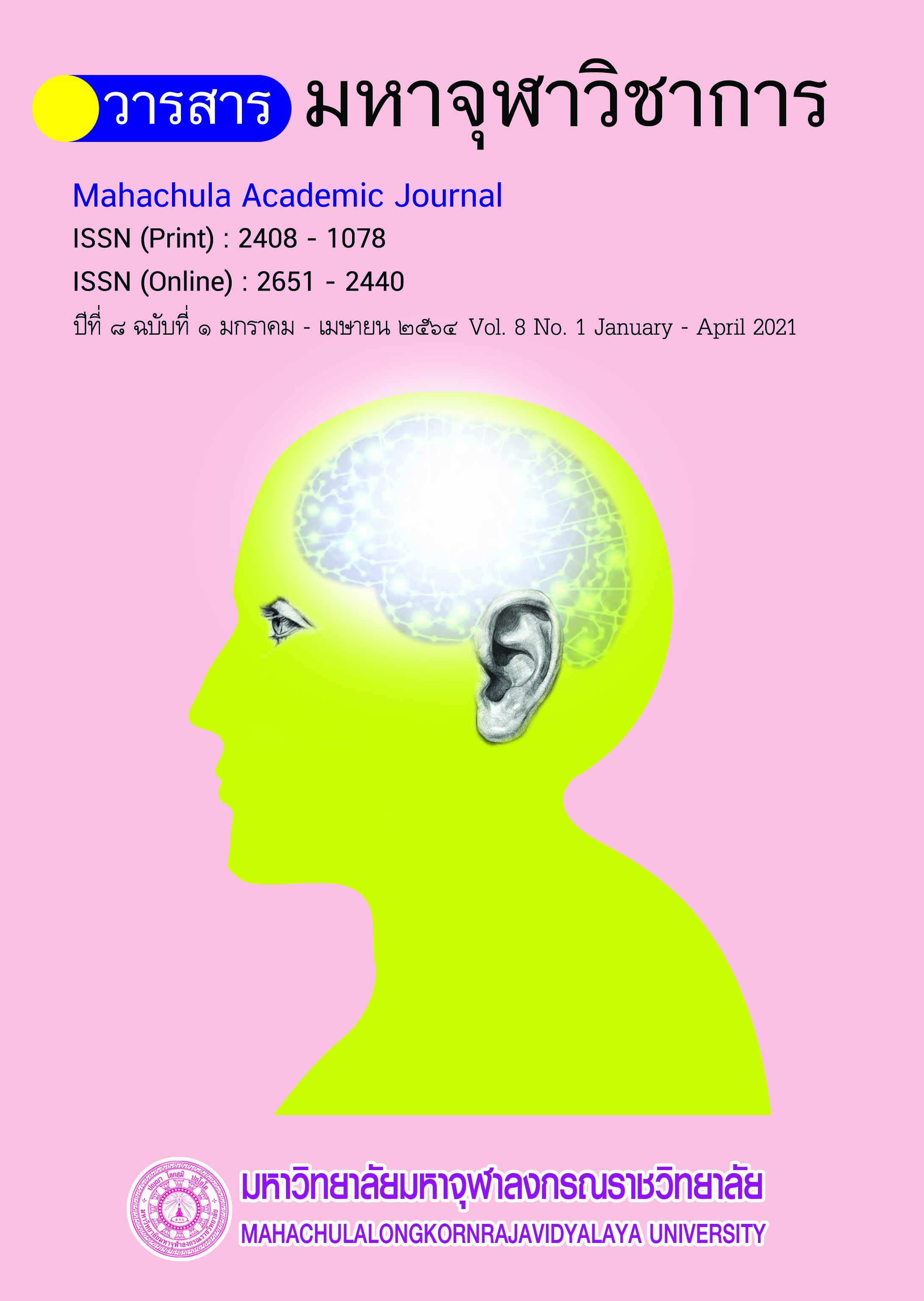Comparison of the STEM-Waldorf Teaching Technique and Su Ji Pu Li Principles for Mathematics Teachers for Cross-Subject Area Teaching Purposes
Main Article Content
Abstract
The purposes of this mixed method research were as follows: 1) to apply the STEMWaldorf teaching technique for cross-subject area teaching by Su Ji Pu Li principles for mathematics teachers and 2) to compare the learning outcome from the teaching performance by STEM-Waldorf technique in cross-subject area. The quasi-experimental with semi-action method was used for this study.
The data were collected in the academic year 2018. The areas of the research were Wat Thamanao Elementary School in Suphanburi province and Wat Khokket (Sermsomboonwong) Elementary School in Samut Songkhram province. The populations used for this study were the 37 students in Grade 6. All students in the populations were also the samples of the research. The samples were from both 2 schools; 18 students
were from Wat Thamanao Elementary School and other 19 students were from Wat Khokket (Sermsomboonwong) Elementary School. They were 100 percent of the whole classes in each school. The research instruments that were used for the study were as follows; a STEM activity named “Pillar Designing”, pretest and posttest assessments and the Arts with Culture subject lesson. The data were analyzed by non-parametric statistics. The Wilcoxon signed rank test was used. The research finding showed that 1) the teachers could use the Su Ji Pu Li with the STEM-Waldorf technique for cross-subject area teaching and 2) the posttest score was higher than the pretest score at a 0.05 statistical significance level. These findings can be used for mathematics teachers who must teach any non-mathematical subjects as their guidelines.
Article Details
References
พระเจตน์สฤษฎ์ อินทร์จันทร์. “ผลการเรียนแบบอีเลิร์นนิง ด้วยกิจกรรมการเรียนรู้แบบ สุ จิ ปุ ลิ ที่มีต่อความสามารถในการเรียนของนักเรียนนักธรรมชั้นโท”. วารสาร Veridian E-Journal SU. ปีที่ ๕ ฉบับที่ ๑ (มกราคม – เมษายน ๒๕๕๕): ๖๙๓-๗๐๙.
สถาบันส่งเสริมการสอนวิทยาศาสตร์และเทคโนโลยี. ความรู้เบื้องต้นสะเต็ม. กรุงเทพมหานคร: สกสค. ลาดพร้าว, ๒๕๕๘.
สำนักงานเลขาธิการสภาการศึกษา. รายงานการวิจัยเพื่อจัดทำข้อเสนอนโยบายการส่งเสริมการจัดการศึกษาด้านสะเต็มศึกษาของประเทศไทย. กรุงเทพมหานคร: พริกหวานกราฟฟิค, ๒๕๕๙.
สุพรรษา กลัดน้อย และ พรทรัพย์ พรสวัสดิ์. การจัดกิจกรรมการเรียนรู้ทางคณิตศาสตร์โดยเชื่อมโยงกับงานสถาปัตยกรรมทางพระพุทธศาสนา. เอกสารสืบเนื่องการประชุมวิชาการทางคณิตศาสตร์ ครั้งที่ ๒๒ ประจำปี พ.ศ. ๒๕๖๐. เชียงใหม่: ม.ป.ท., ๒๕๖๐.
อัมรินทร์ อภิรักษ์มาศ. สะเต็มศึกษาเพื่อการสอนคณิตศาสตร์ในระดับการศึกษาขั้นพื้นฐานและการจัดการเรียนรู้ด้วยรอยยิ้ม. เอกสารสืบเนื่องการประชุมวิชาการระดับชาติ ครั้งที่ ๑๐ มหาวิทยาลัยราชภัฏนครปฐม. นครปฐม: การ์แลนด์ พับลิชชิ่ง, ๒๕๖๑.
Apirakmas A. Mathematics teaching in basic education in Thailand by integrating STEM-Waldorf technique to increase students’ achievement and inspiration in learning. Proceedings on the 3rd International Conference of Multidisciplinary Approaches on UN Sustainable Development Goals 2018. Nakhon Pathom: Garland Publishing, 2019.
เว็บไซต์
คำสั่งกระทรวงศึกษาธิการ ที่ สพฐ.๑๒๓๙ เรื่อง ให้ใช้มาตรฐานการเรียนรู้และตัวชี้วัด กลุ่มสาระการเรียนรู้คณิตศาสตร์ วิทยาศาสตร์ และสาระภูมิศาสตร์ ในกลุ่มสาระการเรียนรู้สังคมศึกษา ศาสนาและวัฒนธรรม (ฉบับปรับปรุง พ.ศ. ๒๕๖๐) ตามหลักสูตรแกนกลางการศึกษาขั้นพื้นฐานพุทธศักราช ๒๕๕๑. [ออนไลน์]. แหล่งที่มา: http://academic.obec.go.th/newsdetial.php?id=75 [๑๓ ตุลาคม ๑๕๖๑].
รักลูก. โรงเรียนแนวการสอนแบบวอลดอร์ฟ Waldorf เป็นยังไง?. [ออนไลน์]. แหล่งที่มา: http://www.rakluke.com/school-zone/11/56/1354/ [๒๐ มิถุนายน ๑๕๖๑].
โรงเรียนขนาดเล็ก. [ออนไลน์]. แหล่งที่มา: www.moe.go.th/small_sch/ information.htm [๑๓ ตุลาคม ๒๕๖๑].


